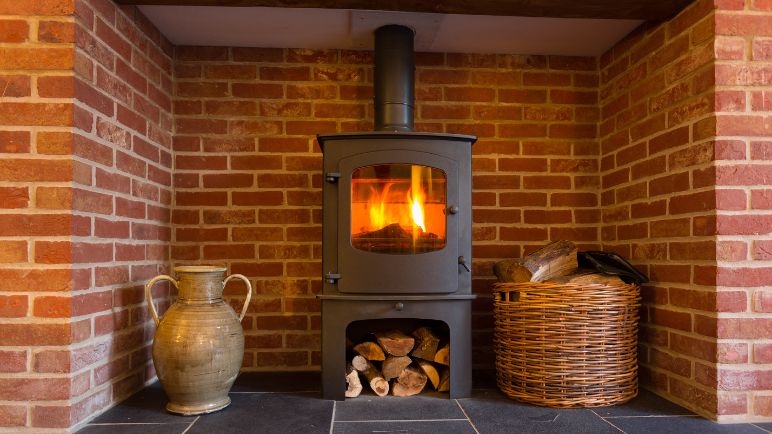Lighting a stove fire efficiently and safely is crucial for anyone who uses a stove or fireplace. Whether camping outdoors or cosying up to a warm fire at home, understanding the proper techniques to light a stove fire is essential. This article will guide you through the step-by-step process, ensuring that you can enjoy a warm and comforting fire.
Gathering the Necessary Supplies
Before you begin, gather the following supplies:
- Firewood
- Kindling
- Newspaper or fire starters
- Matches or a lighter
- Fireproof gloves (optional)
These readily available supplies will streamline the process and make it easier to light your stove fire.
Preparing the Stove and Surrounding Area
Ensure that your stove is clean and free from any debris. Remove any ashes or leftover wood from previous fires. Clear the area around the stove, ensuring no flammable objects are nearby. This step is essential for safety reasons and prevents any potential hazards.
Choosing the Right Firestarter
Selecting the appropriate firestarter can significantly impact the ease and speed of lighting your stove fire. Common firestarters include newspapers, fire starter cubes, or small twigs. If you opt for newspaper, crumple a few sheets into loose balls. Alternatively, fire starter cubes are compact and easy to ignite.
Lighting the Fire

Now that you have everything prepared follow these steps to light your stove fire:
Step 1 – Arrange the Firewood
Place sufficient firewood inside the stove, ensuring proper airflow and space for kindling. Stack the logs in a way that allows air to circulate freely.
Step 2 – Position the Kindling
Position a handful of kindling on top of the firewood. Kindling consists of small, dry sticks or twigs that catch fire quickly and help ignite the larger logs.
Step 3 – Add the Firestarter
Place your chosen firestarter (newspaper or fire starter cubes) strategically within the kindling, ensuring it is in direct contact with the firewood.
Step 4 – Ignite the Firestarter
Using matches or a lighter, carefully ignite the firestarter. Ensure you reach the newspaper or fire starter cubes to initiate the flame.
Step 5 – Close the Stove Door
Once the fire starts, gently close the stove door to maintain airflow. This helps control the intensity of the fire and ensures efficient burning.
Maintaining the Fire
To keep the fire burning steadily, follow these tips:
- Add additional firewood as needed.
- Avoid overcrowding the stove, as it can restrict airflow.
- Adjust the damper or vents to control the intensity of the fire.
- Remove any ashes periodically to maintain optimal burning conditions.
Safety Precautions
While lighting a stove fire, it’s crucial to prioritise safety. Keep these precautions in mind:
- Use fireproof gloves when handling hot surfaces or firewood.
- Keep flammable objects away from the stove.
- Install smoke detectors and carbon monoxide detectors near your stove.
- Never leave the fire unattended, and extinguish it before leaving the area.
Troubleshooting Common Issues
Sometimes, you may encounter difficulties when lighting a stove fire. Here are some common issues and their solutions:
Issue: The fire goes out quickly.
Solution: Ensure that the firewood is dry and properly seasoned.
Issue: Excessive smoke is produced.
Solution: Check if the stove’s vents or chimney are obstructed. Clear any blockages for better airflow.
Issue: Difficulty igniting the firestarter.
Solution: Use additional fire starters or consider using a different type of firestarter.
Conclusion
Lighting a stove fire can be an enjoyable and rewarding experience when done correctly. Following the step-by-step guide outlined in this article, you can light a stove fire safely and efficiently, whether at home or out camping. Remember to prioritise safety and maintain the fire properly for a cosy and warm ambience.
FAQs
Can I use gasoline or other flammable liquids to light a stove fire?
No, it is hazardous to use gasoline or any flammable liquids. Stick to safe fire starters like newspapers or fire starter cubes.
How often should I clean my stove?
Regular cleaning is essential for safety and optimal performance. Clean your stove at least once a month or more frequently if heavily used.
Can I leave the fire unattended?
It’s highly recommended not to leave the fire unattended. Always extinguish the fire before leaving the area.
Should I use hardwood or softwood for my stove fire?
Hardwood, such as oak or maple, is generally preferred for longer-lasting and more efficient fires.
Can I roast marshmallows over a stove fire?
While it’s not recommended to roast marshmallows over a stove fire, there are safer alternatives, like using a fireplace or a campfire outdoors.


